The subject of today’s review is a bit of a curiosity. I got it in a lot off of eBay and it doesn’t have any manufacturer markings or identification printed on it. I initially thought it was a northern red snapper (Lutjanus campechanus) and reviewed it as such, and that’s also what it is marketed as on the internet. Someone in the comment section alerted me to its true identity however, this is a red seabream (Pagrus major), and it appears to be heavily inspired by a figure from Favorite. Although I’m somewhat embarrassed at my incorrect identification of the toy this is one of the perils in trying to review unmarked figures. To make matters worse, common names for the red seabream include Japanese red snapper and red seabream snapper!
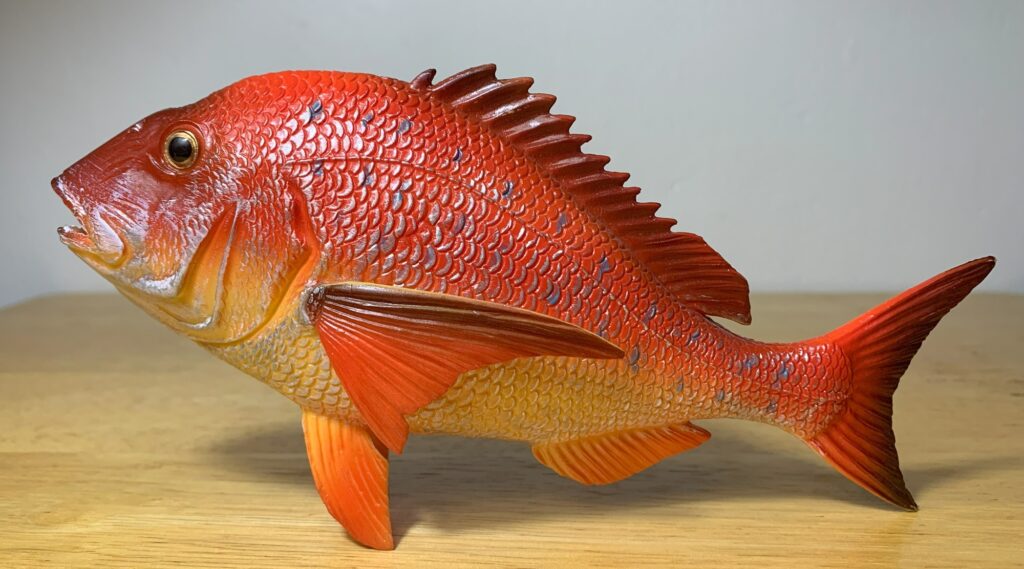
Red seabream are members of the Sparidae family, also known as porgies. They are found in the northwest Pacific, from the northeastern part of the South China Sea, north to Japan. They tend to live over rough seabeds and reefs at depths between 32-164’ (10-50 meters) but they can be found deeper. They feed on benthic invertebrates and fish and they’re a popular food fish within their range, especially in Japan, and also used in Chinese medicine.
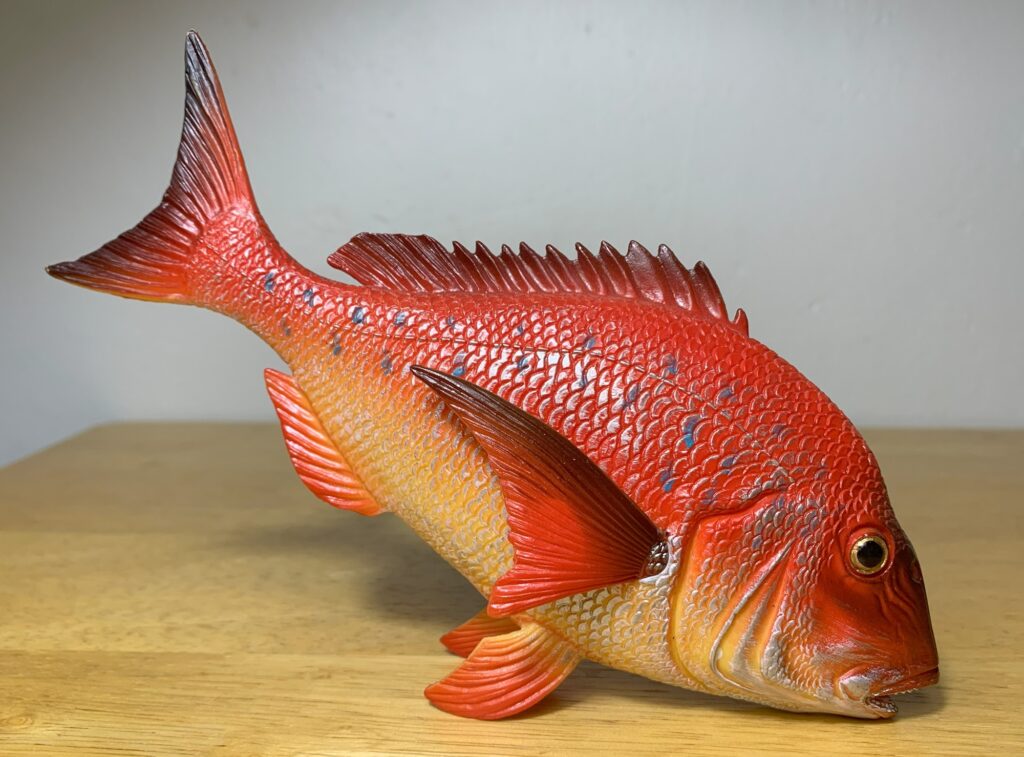
Red seabream reach an average total length of 11” (30 cm) and a maximum total length of 39” (100 cm). This figure measures 7” (17.78 cm) in total length which puts it between 1/1.5-1/5.5 in scale. The figure is presented in a static/straight pose and can either rest on its pelvic fins and caudal fin or pelvic fins and lower jaw. The figure is solid and rather hefty with fins that are somewhat pliable but rigid enough to stay in place. The tips of the pectoral fins and the dorsal spines are pointy enough that I wouldn’t give this toy to a young kid.
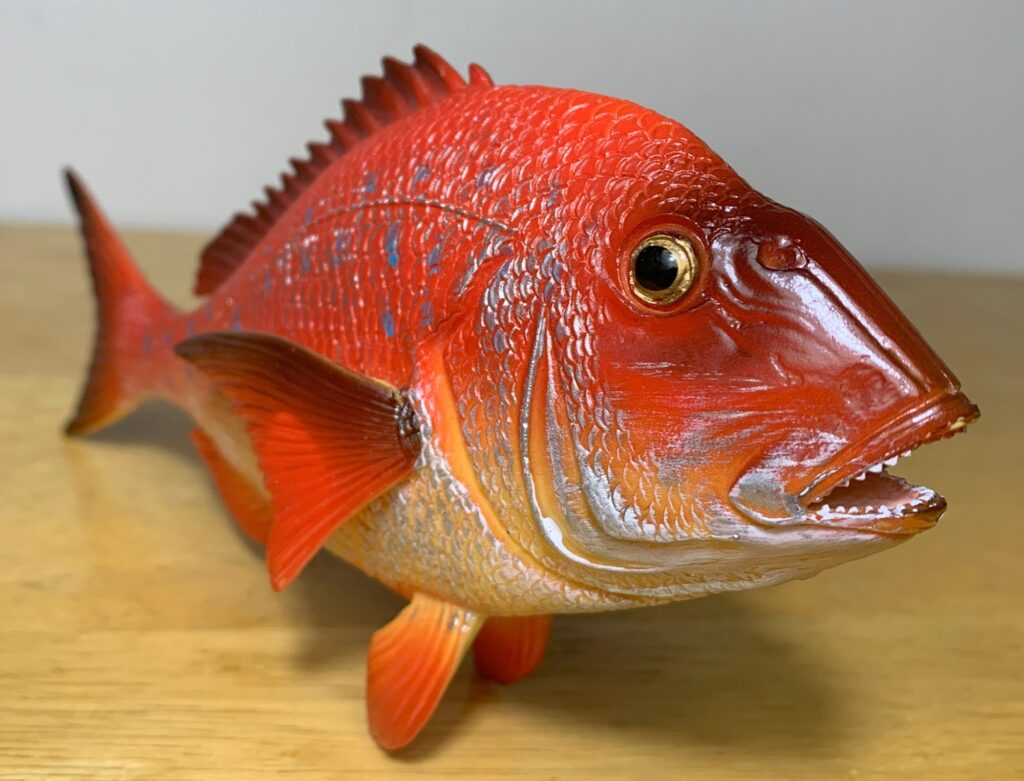
The figure is identifiable as a red seabream with its large head and somewhat pointed snout, sloping back, and laterally compressed body. There are 11 spines on the dorsal fin when there should be 12 and there are 7 soft rays when there should be 10. There are no spines on the anal fin when there should be 3 and there are 14 soft rays when there should be 8. When I reviewed this figure as a Northern red snapper, I thought the fin shapes were wrong. Well, of course they were…for that species! Now that I know it’s a red seabream I can see that they’re correct.
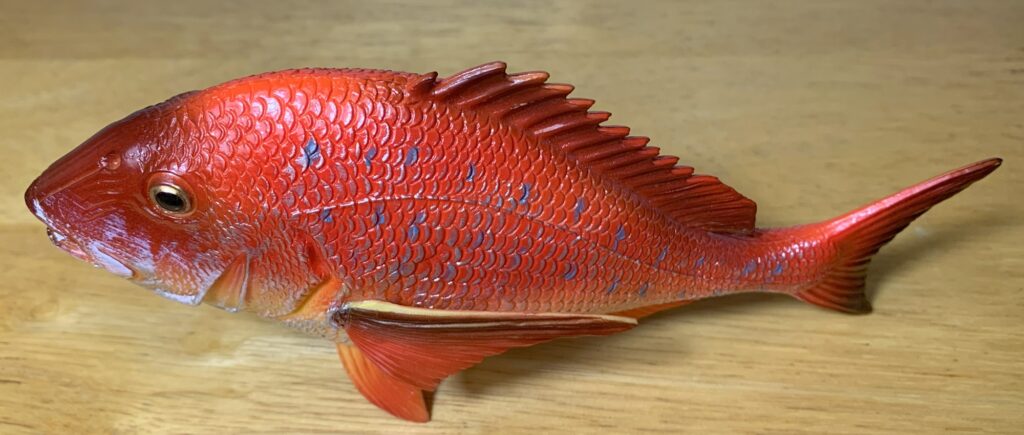
The toy is well sculpted with lots of fine detail. Small teeth are sculpted inside the mouth and they’re generic in size and shape, not like the specialized dentition of the actual red seabream which has pointed teeth in the front with molars behind them. The nostrils are accurately located in front of the eye, and the details of the operculum are decent. The figure is covered in nicely textured scales and the fin rays are well rendered. A lateral line can be seen running across the body.

The figure is red, with a yellowish red underside, and a silver wash over the body and some blue spots along the sides. Dark red is painted across the face and dorsal fins, and along the edges of the pectoral and caudal fins, and the blending between the different tones is excellent. The teeth are white but crudely painted and the inside of the mouth is pink. The eyes are accurately yellow with black pupils. This coloration is largely accurate to the red seabream, but they can also be purplish brown.

Although this figure is almost identical to the Favorite red seabream it is also much larger and more accessible than that figure. I don’t like to encourage the purchase of knockoffs but I’m also not entirely sure that I would consider this figure a knockoff as there are some differences between the two figures. For one, the larger size of this figure means that the details appear more refined. Regardless, a red seabream is sure to make for an interesting addition to any collection of marine fish, and this figure looks great when displayed with similarly sized fish figures from known brands. This figure is widely available online for about $13 but keep in mind that it’s mostly being marketed as a red snapper. You won’t find it on amazon if you search for red seabream.
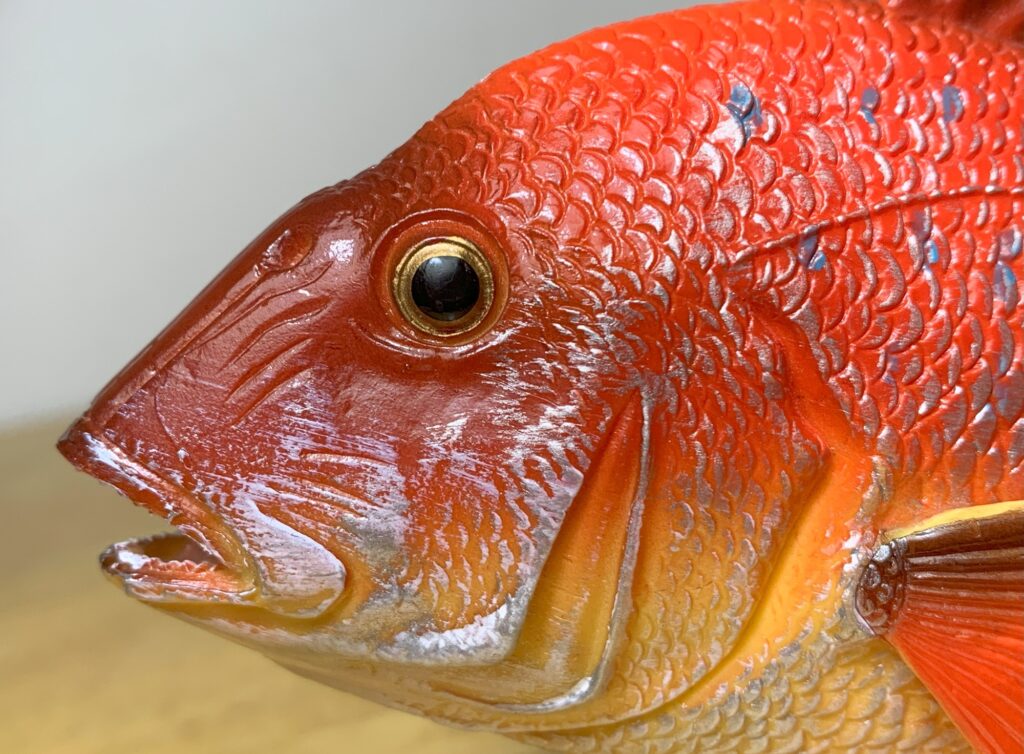
Disclaimer: links to Ebay and Amazon on the AnimalToyBlog are affiliate links, so we make a small commission if you use them. Thanks for supporting us!




I find it frustrating when figures are unbranded or we otherwise don’t know their origins. I hate databasing things as ‘unknown’ in my collection 🙂
Nice figure, though!
I don’t really like it either. If it didn’t come in a lot I probably wouldn’t have bought it had I come across it. I am glad to have it though. It looks good with my other standard size fishes, like Safari’s IC fishes.
I have a set of these figures. This is actually a red Sea bream or マダイ, Pagrus major, and is a copy of model made by “favorite company”.
Oh no! It appears that you’re correct! I’m going to have to go through and basically rewrite the entire review. Thanks for the information though.
I think it’s probably referable to Oenux
https://a.aliexpress.com/_mMTAsJb
They appear to produce a number of knockoffs/revisions of known companies like Colorata, Safari, CollectA, and, yes, Favorite.
I have some, knowingly and unknowingly, and they’re usually notable for being larger or smaller than the original, and differently painted. And often cheaper but still decent (just came across a peacock mantis shrimp and very tempted)
Thanks for the info, and the link. I’m finding myself drawn to a few of those myself. I have the sea robin and it is of decent quality too. It looks to be inspired by Colorata’s.
It absolutely is! But if I recall, it is much larger–that seems to be the way they go, reusing the Colorata but making them almost Incredible Creatures size! I have a really large Huchen from them like that, and my recent Arctic char is an oversized version of the Colorata white-spotted char.
I appreciate that they are more accessible than the originals in some instances at least.
It is much larger than the Colorata version, similar to a Safari IC size. I’m not normally a fan of bootlegs but the larger sizes and better accessibility makes me more forgiving of these.